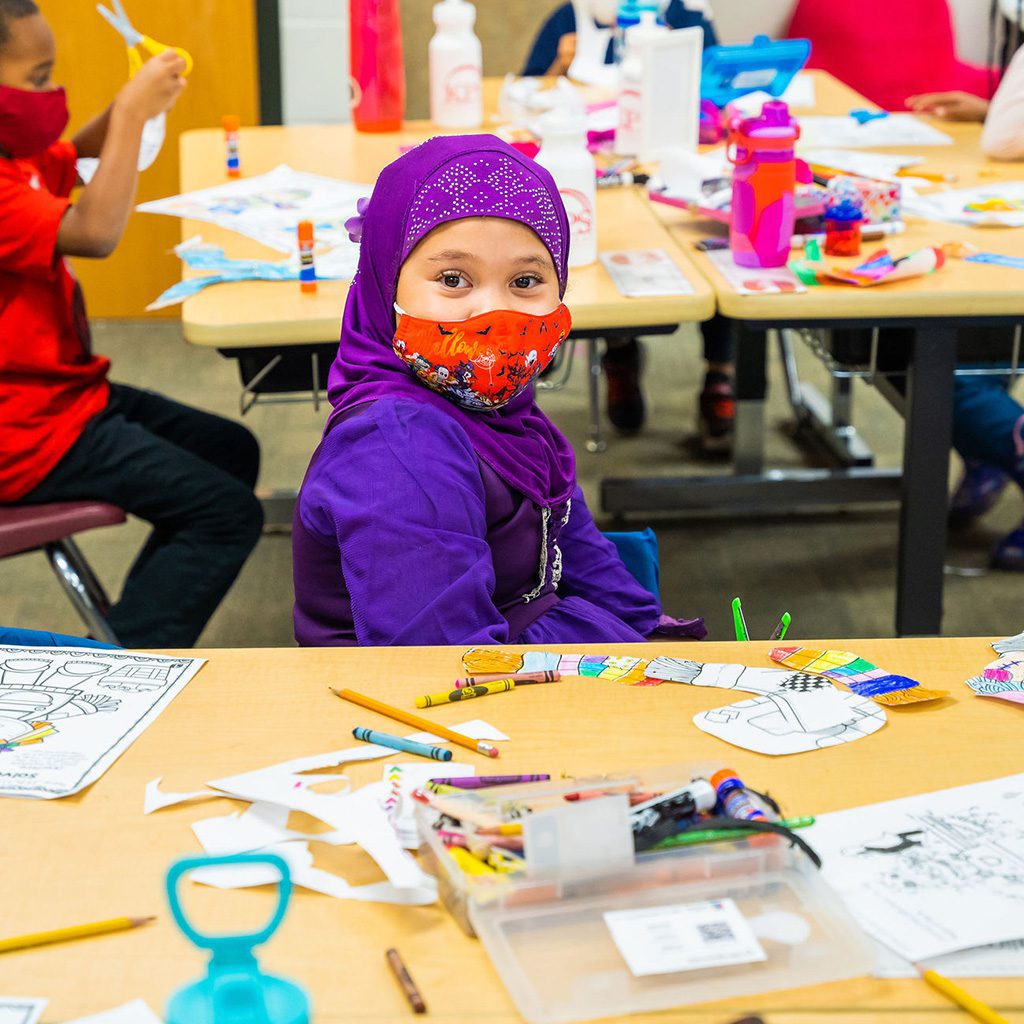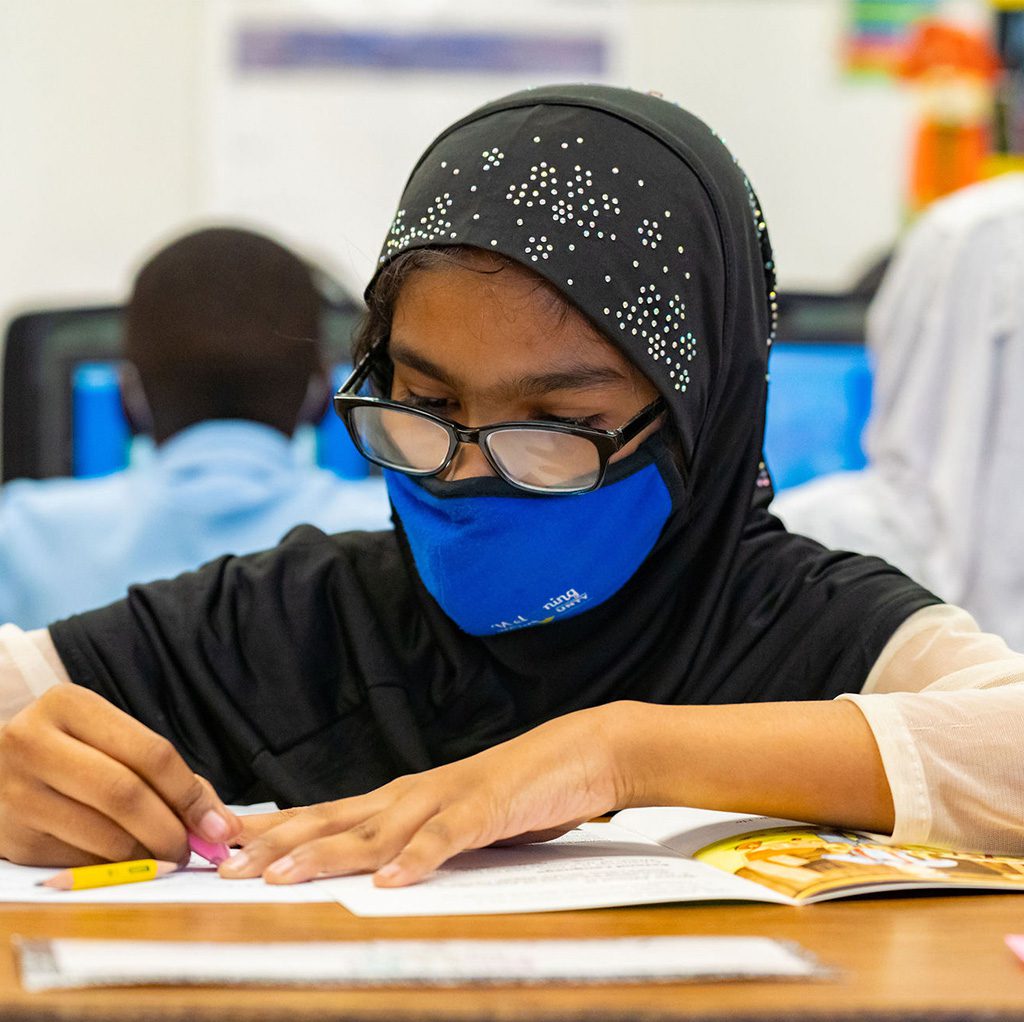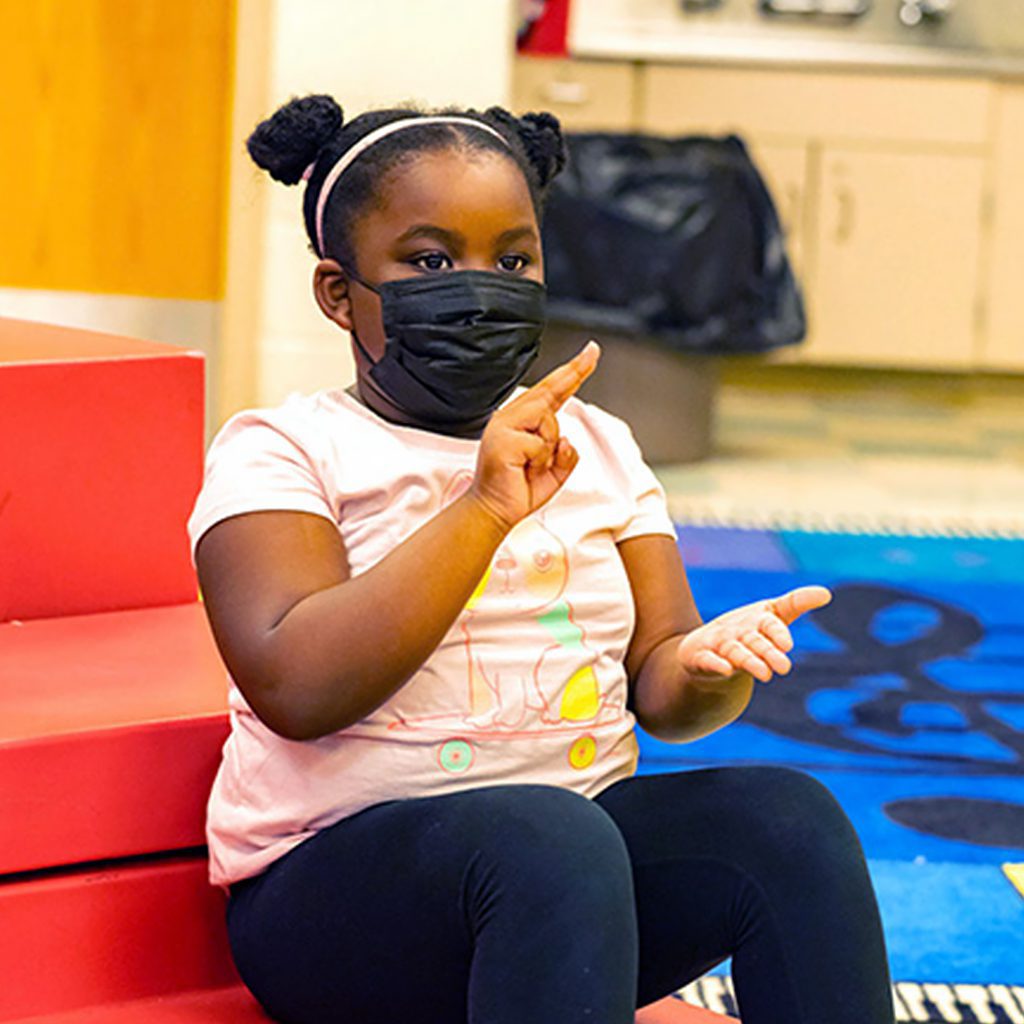View the Archives
The Building the Hope Schools archives showcase award-winners from years past
In 2021, The Education Trust-Midwest launched the Building the Hope Schools Awards.
For the 2021 inaugural cohort, the majority of students were students of color and students from low-income backgrounds. These public schools were in the top 25% for academic proficiency or above average student growth for all Michigan students. Moreover, their subgroups of students — Black, Latino, low-income and English Learner students in particular – also were performing in the top 30% among Michigan’s high-growth public schools where data is available. They also engaged in culturally- and linguistically-responsive schoolwide practices — including instructional practices — that facilitated students’ outstanding academic progress and growth, making them true outliers in the state of Michigan.
2022
Warren Consolidated schools
Lean Elementary
At Lean Elementary, students from low-income backgrounds and English learners demonstrated growth above the state average in both ELA and Math for three straight years. Lean Elementary stands out with its intentional language support and instruction, dedication to its school community and attention to celebrating diverse communities. Employing culturally- and linguistically-affirming instructional practices, the school librarian makes a special point of having books with diverse characters in them so students see themselves and know they matter. A strong collaborative relationship between classroom teachers, EL teachers and Title I teachers helps build in success.


Kentwood
Challenger Elementary
Challenger Elementary stands out due to its focus on supportive, welcoming relationships with students and parents. The school’s Black students, English learners and students from low-income backgrounds all demonstrated growth above the state averages in both ELA and Math for three straight years. The principal sets a welcoming tone from the time students arrive with her energy, excitement and enthusiasm. Progress is monitored regularly to help identify gaps in students’ learning and how to push those already meeting grade-level standards. Teaching grade-level standards to all students and providing support where needed are strategies that help Challenger’s students progress.
Tawas City
Clara Bolen Elementary
At Clara Bolen Elementary, students from low-income backgrounds demonstrated above average academic proficiency rates in both ELA and Math for three consecutive years. The school has an intentional focus on small-group instruction to meet student needs, and it serves as an intentional center of community in its town. Receiving special services is not a stigma because everyone receives special attention. All students—based on assessments—are pulled out or grouped into small groups for instruction daily either with their own teacher or Title I instructor. Teachers then use the ongoing student assessments to tailor their instruction to students’ needs, whether it’s providing more focused guidance in the classroom or pulling the students into small group for more intimate instruction.


Pontiac
Walton Charter Academy
At Walton Charter Academy, Latino students and English learners demonstrated growth above the state average in both ELA and Math for three consecutive years. Walton Charter Academy also stands out for its intentional outreach to the Latino community. The school makes a concerted effort to engage parents, helping to make non-native English-speaking parents feel comfortable and competent in the school. A teacher and a para-professional are assigned to every K-2 classroom, helping to ensure students have a strong foundation from the early grades.
Grand Rapids
Vista Charter Academy
Vista Charter Academy’s English learners demonstrated growth above the state average in both ELA and Math for three consecutive years. Vista stands out for its teachers’ attention to English learners’ needs in classroom instruction. A strong EL staff helps ensure students are progressing. Students learn early to monitor their own progress through frequent assessments, either weekly or bi-weekly. Even kindergarteners mark their progress. When students are keeping track, they’re more invested in their success, the principal says.

2021
Detroit Public School Community District
Bennett Elementary
At Bennett Elementary School, English Learners showed exceptional academic growth as demonstrated by exceeding the statewide above average growth rates in both ELA and Math for three straight years. Bennett Elementary teachers employ targeted and differentiated instructional strategies to ensure their English Learners have the tools to grow in proficiency year after year. Additionally, the school engages families through a variety of linguistically-responsive communications, including an app that provides translation for monolingual parents and caregivers. An EL Interventionist is also on staff to further assist students towards growth in English fluency and content mastery. Finally, Bennett sees great success with its Scholar Dollars incentive program, which has positively impacted behavior and attendance and provides opportunities to celebrate student achievement.


Kentwood Public Schools
Discovery Elementary
At Discovery Elementary School, most subgroups of students, including Black, Latino, and students from low-income backgrounds, showed exceptional academic progress as demonstrated by exceeding the statewide proficiency rate in both ELA and Math for three consecutive years. Discovery Elementary has demonstrated consistent commitment to their diverse school community by addressing language barriers, hosting cultural celebration days, and advocating for a culturally-responsive curriculum. In support of their belief that all children are capable of high achievement, students learn in groups tailored to their levels and teachers utilize small learning groups to support students who are struggling. Moreover, the school schedule is optimized and designed to allow for deep student learning. Parents also report that their children are known and engaged in their unique strengths and needs. Moreover, the school schedule is optimized and designed to allow for deep student learning.

A National Heritage Academies School
Hamtramck Academy
At Hamtramck Academy, multiple student groups including Asian students and students from low-income backgrounds showed exceptional academic progress as demonstrated by exceeding the statewide proficiency rate in both ELA and Math for three consecutive years. Hamtramck Academy effectively uses data on an ongoing basis to track student progress and inform individualized instruction. Teachers pay special attention to the differences between state assessment performance and day-to-day performance, and utilize daily “exit tickets” to determine needs for further intervention and focused, small group instruction. Students at Hamtramck benefit from a robust team of specialists, interventionists and paraprofessionals, and intervention groups are varied to reduce stigma and promote an inclusive class environment. Hamtramck Academy also leverages programs and apps like DreamBox, Lexia, and Khan Academy to complement in-class instruction, reinforce lessons, and provide students extra challenge as needed. The faculty and staff demonstrate a commitment to engaging families and honoring the many cultures represented in their school community by providing Arabic and Bengali translators, engaging in diverse reading materials, and using culturally-responsive communication and discipline practices.
South Redford School District
Thomas Jefferson Elementary
At Thomas Jefferson Elementary School, multiple student subgroups, including Black students and students from low-income backgrounds, showed exceptional academic growth as demonstrated by exceeding the statewide above average growth rate in both ELA and Math for three consecutive years. School leaders at Thomas Jefferson value students’ growth and efficacy, and demonstrate this by helping each student understand their current academic situation and encouraging goal setting. Teachers and leaders have a strong belief in students’ potential and have changed practices and policies over the last few years to eliminate barriers for students and create conditions for academic success. Some of these changed practices and policies include increasing attention and teachers’ skill towards accelerating students’ learning, decreasing suspension and discipline rates, and pulling all students for targeted instruction to limit the stigma of remediation.
